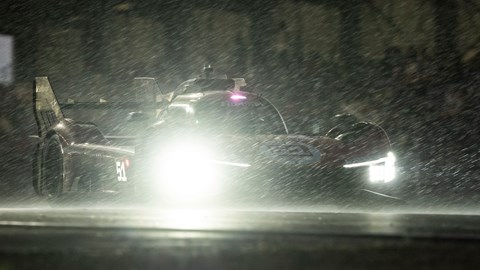► Le Mans 2023 marks 100 years of the race
► This year included more Hypercars than ever
► Why were there so many accidents?
This year’s Le Mans promised to be one of the most exciting in years, and the 2023 running of the 24-hour race hasn’t disappointed. There’s still over six hours to go, but it’s already proving to be a classic: we’ve seen some incredible stints and some serious heartbreak. The weather has also stepped up too, delivering plot twists so dramatic they feel staged.
This year’s Le Mans has also been a race of attrition, with a significantly greater number of unforced errors than previous years. So why is Le Mans 2023 breaking hearts and minds more than any race in recent memory? According to Hertz Jota team boss Sam Hignett, it’s down to a few factors:

The awful weather
‘I think there’s a number of things,’ Hignett said to CAR magazine over breakfast. ‘First, the weather has been horrendous.’ And he’s right: the weather at this year’s Le Mans has gone from overcast to torrential rain in and back again in the space of half an hour – and it’s happened more than once. Drivers have to had to navigate through dramatically different levels of grip, often with the wrong tyres – that’s forced numerous mistakes under braking and on acceleration in corner exits.
It’s also soaked some ill-prepared journalists…
More cars, more danger
This year the Hypercar field has grown massively, and it’s had a huge impact both on the slower traffic being lapped, and the behaviour of the Hypercar drivers: ‘In previous years, there’s been two Toyotas lapping at the speed that the Hypercars are lapping – now there’s 16 hyper cars lapping at that speed.’ Hignett told CAR. ‘You’re just seeing far more overtakes for position.’
‘The landscape of the race has changed,’ Hignett added. ‘It used to be easy in [LMP2], you’d be told once every two hours, two hours are coming. Now you listen to the [LMP2] radio, and it’s every five minutes, “Hypercar coming, Hypercar coming.” So it’s, it’s just workload on the driver as well. You’ve got to be aware of everything that’s going on.’

In the Hypercar era, every tenth counts
At the same time, a more competitive Hypercar field has forced LMH drivers to race flat-out and take more risks when scything through traffic. In the past, it was often Toyota vs Toyota and team orders could keep the risk down after a certain point in the race. Now, it’s Ferrari vs Porsche vs Toyota vs Cadillac, and the time gained and lost in traffic is crucial.
History awaits
There’s a lot at stake this year too. Porsche has returned to the top class for the 100th year of Le Mans, and Ferrari has returned 50 years after its last entry into the premier class. The Toyota team arguably has the most to lose; not winning now could taint the years of dominance where it was the sole manufacturer in the Hypercar class.
‘There is the added pressure, it’s the 100th one everybody wants to win it,’ admitted Hignett. ‘There’s a ridiculous number of spectators here. All of that adds to the pressure on the drivers.’
More cars, and more at stake for teams and drivers? Get used to this scarier, faster and more aggressive version of Le Mans, says Hignett: ‘I think the reality is [that] this is probably what Le Mans is going to be like for a few years now.